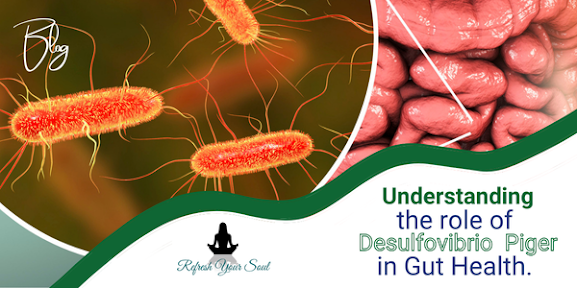When discussing gut health and microbiome balance, much attention has been paid to the interplay of bacteria within the colon. Among these inhabitants is the sulfate-reducing bacterium (SRB), Desulfovibrio Piger, an organism whose significance often flies under the radar but is critical to maintaining metabolic harmony in the gut. This article explores the fascinating role of D. piger as a hydrogen-consuming bacterium, its involvement in short-chain fatty acid (SCFA) production, and its contribution to a balanced microbiome.
The Basics of Gut Microbial Balance
The colon hosts a dense microbial community, where bacterial populations engage in a cooperative balance to process dietary fibers, metabolize nutrients, and support the host’s health. Key players in these processes include:
- SCFA Producers: These bacteria ferment dietary fibers into short-chain fatty acids like acetate, propionate, and butyrate, which are essential for energy and overall gut health.
- Hydrogen Producers: During fermentation, SCFA-producing bacteria release molecular hydrogen (H₂) as a byproduct. If left unchecked, excess H₂ can hinder bacterial growth and metabolism.
- Hydrogen Consumers: This is where Desulfovibrio piger and other hydrogenotrophic microbes step in. By consuming excess H₂, these bacteria maintain metabolic balance, enabling SCFA producers to thrive.
Simply put, the colon functions as a dynamic ecosystem where balance is paramount. Disturbances in this system can lead to dysbiosis, inflammatory conditions, and impaired gut health.
Desulfovibrio piger: Key to Hydrogen Regulation
Studies confirm that hydrogen accumulation in the gut can disrupt fermentation pathways essential for efficient nutrient processing (Wegmann et al., 2017). Hydrogen-consuming microbes like Desulfovibrio piger, acetogens, and methanogens play a stabilizing role by utilizing H₂.
The Metabolic Importance of D. piger
A standout among sulfate-reducing bacteria (SRBs), D. piger achieves its function by using sulfate as an electron acceptor to convert molecular H₂ into hydrogen sulfide (H₂S). While H₂S has been associated with both protective and harmful effects in the gut, its controlled production by microbes like D. piger is vital for maintaining microbial interactions and balancing redox conditions (Rey et al., 2013).
Notably, research involving gnotobiotic mice has shown that dietary factors such as chondroitin sulfate influence D. piger prevalence, highlighting its metabolic adaptability within the gut environment. The presence of D. piger has been linked to reduced hydrogen accumulation and enhanced fermentation efficiency for neighboring bacteria, illustrating its central role in microbial symbiosis.
A Delicate Tradeoff with D. piger
Like many complex systems, D. piger’s role is not without complications. While its capacity to consume H₂ is highly beneficial, its production of H₂S can be a double-edged sword. Excess hydrogen sulfide has been implicated in gut epithelial stress and inflammatory conditions such as ulcerative colitis and other gastrointestinal (GI) diseases ([Mutuyemungu et al., 2023](https://doi.org/10.1016/j.jff.2022.105367)).
Despite these concerns, D. piger is generally present in healthy individuals, maintaining a functional coexistence within the microbiome. For example, one study revealed that D. piger was the most frequent SRB in a cohort of healthy adults, present in 60% of fecal samples (Rey et al., 2013).
Gut Microbiome Balance and Health Outcomes
The regulatory role of Desulfovibrio piger extends far beyond H₂ consumption. Its interactions with other microbes in the colon significantly impact gut physiology, including SCFA availability, nutrient absorption, and immune modulation. Maintaining balance among SCFA producers, H₂ producers, and H₂ consumers is crucial for gut homeostasis.
Here are some of the benefits of a balanced hydrogen-consuming microbiota like D. piger:
- Enhanced Fermentation Efficiency: Prevents the buildup of metabolic byproducts, optimizing SCFA production.
- Redox Homeostasis: Regulates electron flow, ensuring metabolic processes remain efficient.
- Microbial Diversity: Promotes cooperation and resource-sharing across bacterial species.
Disruption of this equilibrium can lead to excessive hydrogen concentrations, altering microbial dynamics and contributing to health issues such as bloating, diarrhea, or inflammation.
Dietary Influence on D. piger and Its Colonization
Diet plays a pivotal role in shaping the gut microbiome and modulating the activity of bacteria like Desulfovibrio piger. Fiber-rich diets lead to increased SCFA production, while high-fat, high-sugar diets can trigger shifts favoring hydrogen consumers and SRBs. Studies suggest that inclusion of glycan-rich supplements such as chondroitin sulfate may support D. piger growth by enhancing sulfate availability, with cascading benefits for fermentative activity and oxygen-reduction processes in the gut (Rey et al., 2013).
However, the balance requires careful monitoring. Excessive dietary sulfur preservatives or glycan sources can potentially exacerbate H₂S production, which underscores the importance of a personalized nutrition approach for sustaining gut health.
Moving Toward Gut Health Through Science
The presence of hydrogen-consuming bacteria like Desulfovibrio piger is a testament to the complexity and elegance of the gut ecosystem. These microbes, though small in scale, play a monumental role in maintaining the chain of functional interactions that supports human health.
Every individual’s gut microbiome is as unique as their fingerprint, requiring tailored strategies to ensure balance. Understanding the nuanced roles of bacteria like D. piger equips us to fuel our microbial engines with the right dietary choices and interventions.
To further explore the science of gut health and uncover practical strategies for maintaining a balanced microbiome, join our community. Sign up for exclusive health tips and educational resources offered by leading experts in integrative gut health.
References
Wegmann, U., Nueno Palop, C., Mayer, M. J., Crost, E., & Narbad, A. (2017). Complete Genome Sequence of Desulfovibrio piger FI11049. Genome Announcements, 5(7), e01528-16. https://doi.org/10.1128/genomeA.01528-16
Rey, F. E., Gonzalez, M. D., Cheng, J., Wu, M., Ahern, P. P., & Gordon, J. I. (2013). Metabolic niche of a prominent sulfate-reducing human gut bacterium. Proceedings of the National Academy of Sciences of the United States of America, 110(33), 13582–13587. https://doi.org/10.1073/pnas.1312524110
Mutuyemungu, E., Singh, M., Liu, S., & Rose, D. J. (2023). Intestinal gas production by the gut microbiota: A Review. Journal of Functional Foods, 100, 105367. https://doi.org/10.1016/j.jff.2022.105367

